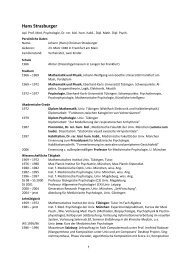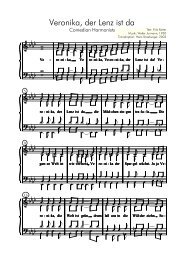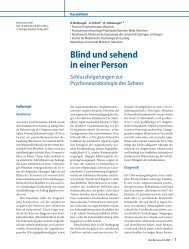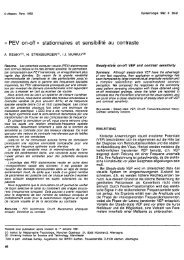Peripheral vision and pattern recognition: a review - strasburger - main
Peripheral vision and pattern recognition: a review - strasburger - main
Peripheral vision and pattern recognition: a review - strasburger - main
You also want an ePaper? Increase the reach of your titles
YUMPU automatically turns print PDFs into web optimized ePapers that Google loves.
<strong>Peripheral</strong>_Vision.doc<br />
subject responses in > 20 young subjects. The model starts with a trade-off function between<br />
character size <strong>and</strong> log <strong>recognition</strong> contrast threshold, approximated by a hyperbola (first row in<br />
Figure 17). Its asymptotes, log C off <strong>and</strong> S off , are both shifted with increasing eccentricity, each<br />
by a linear function (left graph). The equations can be solved for character size S as a function<br />
of eccentricity (second row in the figure), where log C appears as a parameter in the<br />
denominator. For high contrast C, the denominator in that equation becomes mostly constant<br />
except for high eccentricity (because log1 = 0), <strong>and</strong> is thus reduced to conventional M scaling<br />
(black straight line at 100%). At lower contrast, the graphs are bent upwards <strong>and</strong> at low contrast<br />
quickly approach infinity (colored lines). That equation therefore represents a generalization of<br />
M scaling. Finally, correct performance can be predicted by the psychometric function (Figure<br />
17, third row), which shows the percentage of correct answers P c as a function of log<br />
normalized contrast (c/C). Threshold contrast C (from the trade-off function) acts as position<br />
parameter <strong>and</strong> shifts the psychometric function horizontally. The slope has been shown to be<br />
largely independent of stimulus size <strong>and</strong> position (Strasburger, 2001b). The lower asymptote is<br />
given by the rate of guessing γ, i.e., by the inverse of the number of alternatives. The equations<br />
predict contrast <strong>and</strong> size thresholds for <strong>recognition</strong>, <strong>and</strong> the proportion of correct <strong>recognition</strong>, for<br />
singly presented characters of arbitrary contrast, size, <strong>and</strong> position in the visual field (the<br />
anisotropy is not incorporated since it is comparably small).<br />
46






